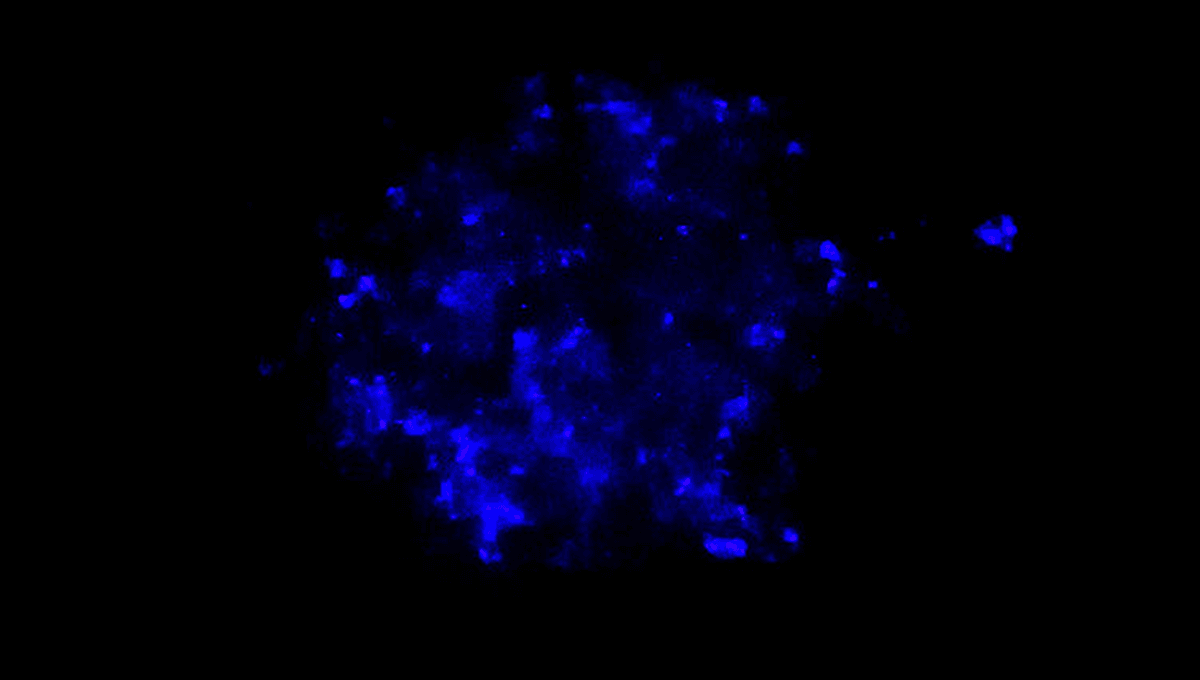
If you’ve ever opened a band-aid in a darkened room, you may have noticed something a little unexpected. If you have the right type of band-aid, it may emit visible blue light.
ADVERTISEMENT GO AD FREE
The phenomenon can also be seen if you unfurl adhesive tape, crush a sugar cube in the dark, or when watching an avalanche falling its way down a mountain. If you don’t have a snow-covered mountain handy, you should for sure try taking a band-aid or roll of adhesive tape into a dark room and get pulling. The effect is pretty weird to see for yourself.
So, what is going on here? The effect is what’s known as “triboluminescence”. Though we have a reasonable understanding of the physics behind it, it’s still not the best-understood phenomenon in physics.
“Triboluminescence is the emission of spontaneous light by mechanical force. This mechanical force is typically activated as a result of frictional contact such as rubbing or scratching,” a review on the topic explains. “Triboluminescence is a cold light emission that is activated by the mechanical force of rubbing, scratching, or other frictional contacts. Another form of luminescence occurs when the mechanical force is sufficient to break material bonds resulting in fracture. This luminescence is referred to as fractoluminescence, fracture stress-mechanoluminescence, or fracture triboluminescence.”
It takes place in all sorts of materials, from mints to snow, through a similar mechanism.
ADVERTISEMENT GO AD FREE
The effect is largely down to a buildup and reunification of excess static charge.
“The explanation of such luminescences appears to be this: whenever two surfaces are separated from each other the capacity diminishes and the voltage rises until a discharge takes place, exciting the surrounding gas to luminesce. It is not possible to prove that mica sheets or tire tape, surgeons’ tape or Scotch tape are oppositely charged as a whole when pulled apart, but there are no doubt local positive and negative regions developed, the discharge between them giving rise to luminescence,” a paper on the luminescence of adhesive tape explains.
“That a discharge does actually take place can be readily shown by stripping surgeons’ tape or Scotch tape in an atmosphere of 2 to 4 cm [0.8 to 1.6 inches] Hg pressure of neon gas. Then the luminescence is reddish instead of yellowish. Red luminescence also occurs when two strips of mica are pulled apart or when collodion or ambroid or rubber cement is stripped from glass in a low-pressure neon atmosphere. When black tire tape is stripped in neon, the reddish luminescence is not marked.”
Here’s that effect seen in band-aids.
ADVERTISEMENT GO AD FREE
The phenomenon was first described by Francis Bacon in 1605 whilst crushing sugar crystals. However, humans have clearly known about the effect for far longer than that. The Uncompahgre Ute Native American tribe in central Colorado made ceremonial rattles out of buffalo hide, and filled them with quartz crystals. When shaken during ceremonies at night, they would emit light through the rattle, a result of the same effect that you now see when opening some scotch tape in the dark.
Source Link: When You Open A Band-Aid Or Unroll Tape, Why Does It Emit Light?